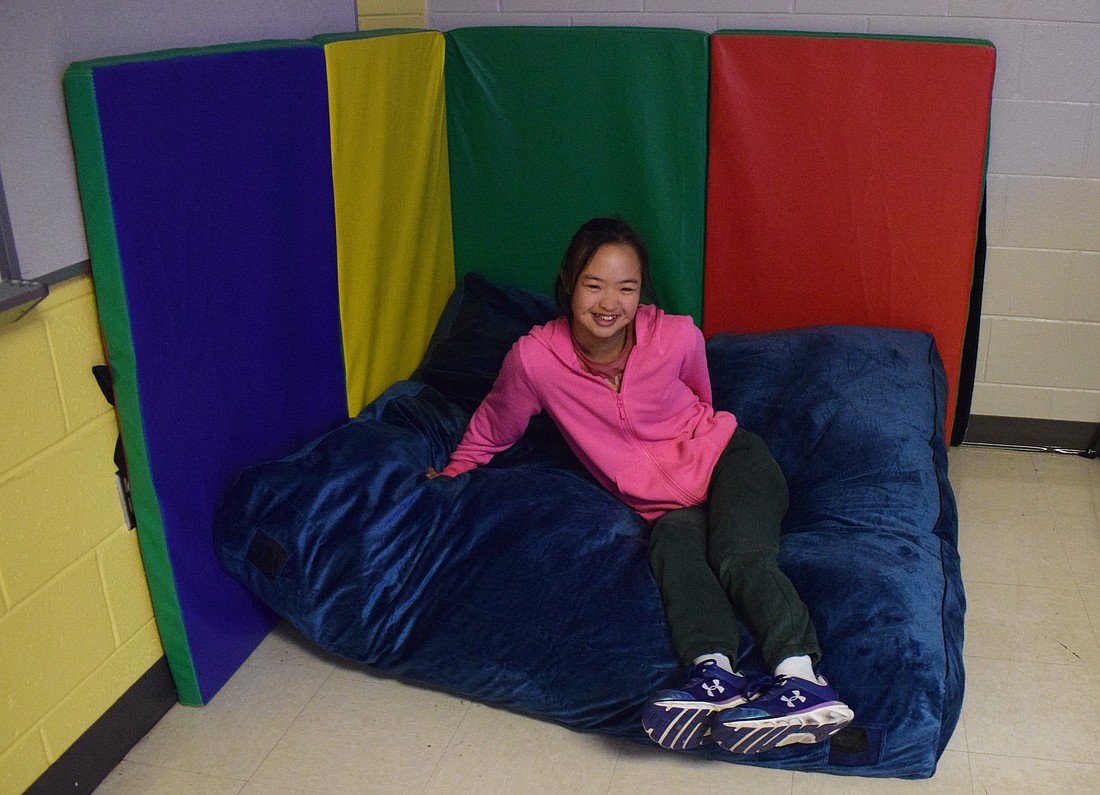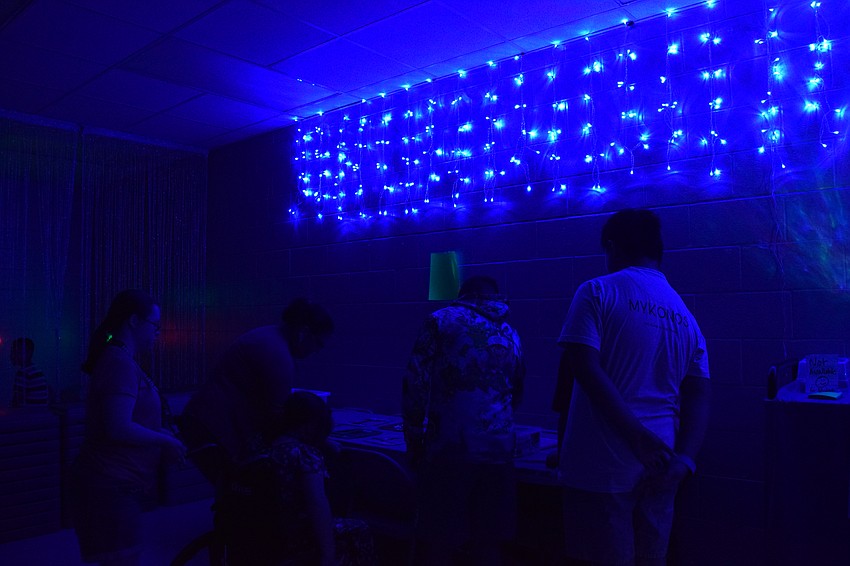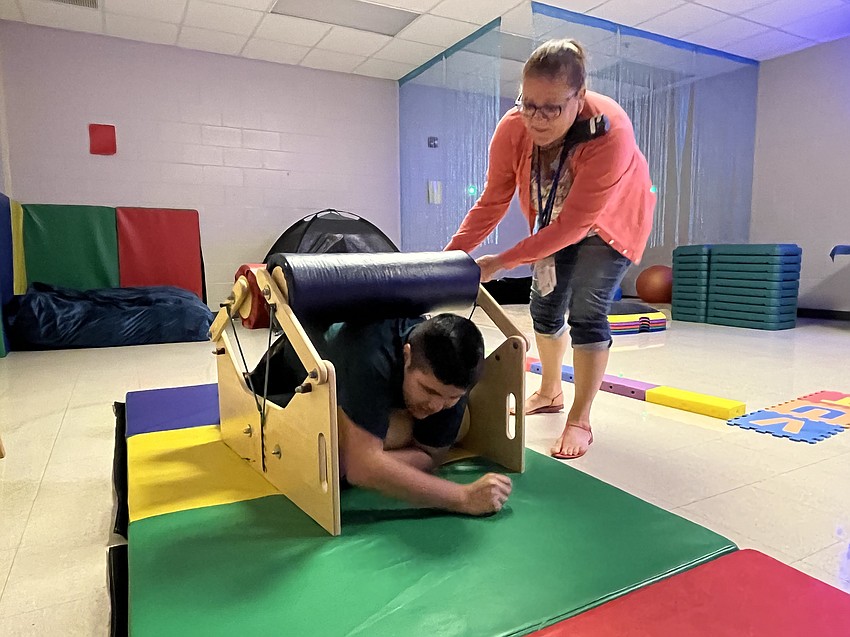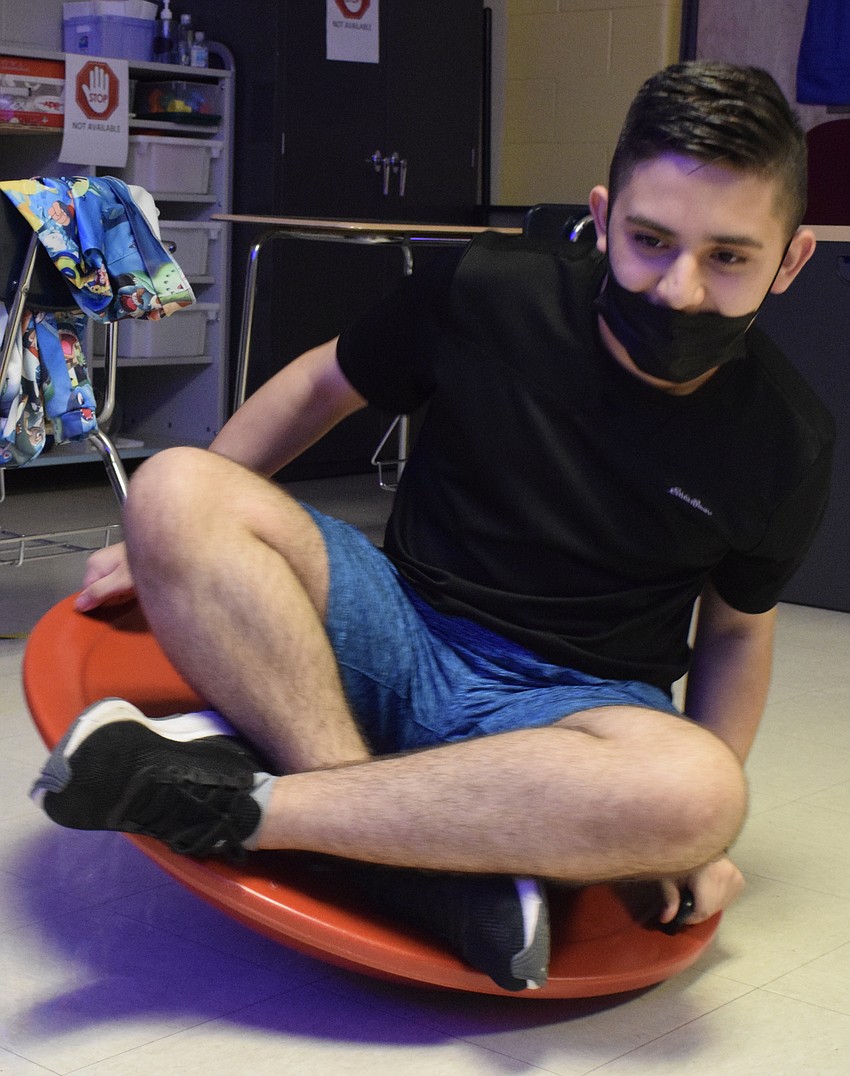- April 2, 2025
-
-
Loading

Loading

Hope Li, an eighth grader at R. Dan Nolan Middle School, launched herself onto the giant crash pad in the corner of the sensory room.
She laughed while sitting on the crash pad for a few moments before trying the squeeze machine.
The squeeze machine puts pressure on every part of the body as Li makes her way through, with the help of Kim Guerra, the Exceptional Student Education department chair.
Students with disabilities, such as autistic students or students with intellectually disabilities, have access to the new sensory room to help calm them when they are overstimulated, relieve anxiety and meet students' sensory needs. Eventually, the room could be open to all students.
"We can see a difference when they leave here," Guerra said about the sensory room. "What we are teaching our students to do is recognize when they're starting to get to feel either frustration or when they need to take a break. This could be one of the areas they go to take a break, to calm down, to get away, to get that input they need."
When Guerra and the Exceptional Student Education teachers bring students into the sensory room and give each student a color so they know at which station to start. After about 5 minutes at each station, the students will rotate so they can have access to different sensory equipment.
The room has small blue lights strung along a wall so the classroom lights do not have to be on if students find them overstimulating.

The sensory room features a crash pad that allows students to literally throw themselves onto a pad to release energy.
There's a trampoline for students to jump on to release energy.
There are tactile sensory toys for students to play with so they can work with their hands.
The lights on the walls help students focus as they can change each light to be the same color.
There are bean bag chairs and a canoe that puts weight on a person similar to a weighted blanket that provides comfort and security while easing stress and soothing anxiety.
If students need a moment to themselves, they can go inside the tent.
Guerra's favorite part of the sensory room is the squeeze machine.
"Going through the rollers, they're getting that sensory input all the way from head to toe, top and bottom," she said. "It will calm them down if they're in a frustrated state where they just need some of the sensory input."

Guerra said teachers also can bring students into the sensory room one-on-one and allow the student to choose a station or equipment that will best help meet their needs.
The sensory room, which opened at the beginning of the 2022-2023 school year, was made possible with the help of the school's Parent-Teacher Organization, which paid for some of the equipment. The Exceptional Student Education department also received a grant, which the teachers used to purchase the lights, crash pad and other items.
Because the school already owned some of the equipment, like the squeeze machine, it cost the school $1,500 to bring the rest of the room together.

With input from the Exceptional Student Education teachers, the school's occupational therapist and behavior specialist, Guerra and her team were able to find the equipment that would best meet students needs and make a successful sensory room.
"That population of students is so unique," Guerra said. "They're so fun. I love working with that population of students. You never know what you're going to get when you walk in there or when you leave. Just to see the smiles on their faces and having them happy and loving their time in here is the best. It's very rewarding."
Guerra said students can come into the sensory room when they're having a bad day, and it'll turn their day around.
She said if students are happy and calm in class, it's for the better of the entire class as there are fewer distractions.
"If you start to see behaviors in the classroom, it could look like anything," Guerra said. "It could be that some students rock, it could be students making noises. (The sensory room) is a positive thing in helping them with their behavior and getting them what they need. It's all about these students, their needs and how we can best meet their needs. This is one room that regardless of what they need, we can find it in here."
Guerra said the room is still a work in progress as they find ways to improve the room and new things to add. For example, she would like to create a sensory path, which is a series of guided movements based on markings on the ground, such as a square that tells a student to twirl or hop to the next square. She also wants to add more string lights around the room.